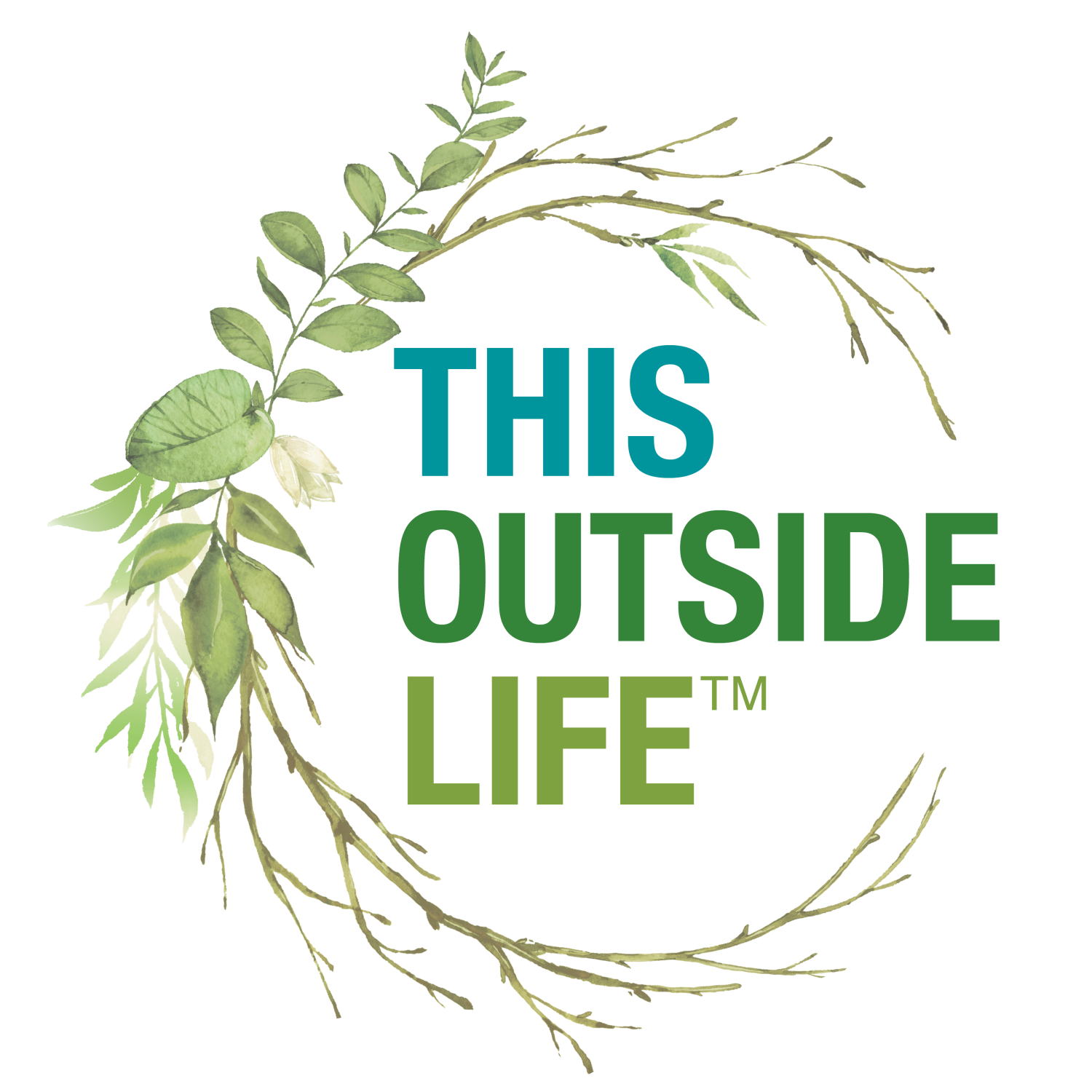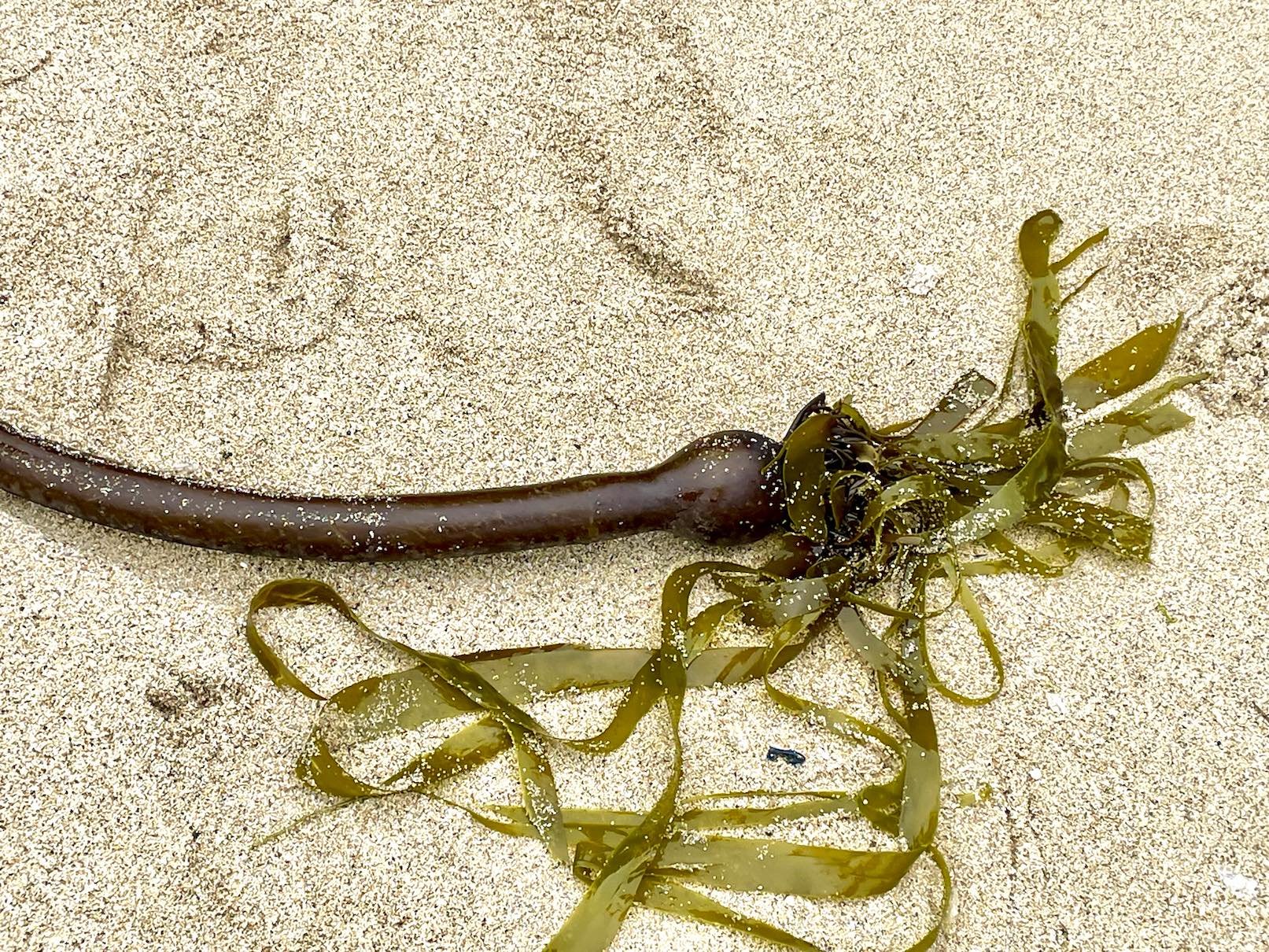LISTEN NOW
Is seaweed the new kale? Might be! Today we are foraging for seaweed along the California coastline. But as you’ll hear in my interview, you can gather seaweed along any coast in the world.
I met up with Tanya Stiller who teaches classes through forageSF (www.forageSF.com) and it was amazing. Who knew there was so much free food, just close by? We explore different kinds of seaweed, how to harvest it, and recipes for preparing it.
Bladder wrack seaweed (see how it’s sort of like the two-fingered peace sign or bunny ears?)
I particularly enjoyed oven-roasted bladder wrack (rockweed). Move over popcorn, you have a competitor! She brought to the class her own supply that she had roasted the night before. It was delicious and our eyes collectively popped in amazement at this nutritious and tasty treat.
Tanya covered the laws on foraging (they are different with each state, so check yours) and we could safely harvest TEN wet pounds, so that wasn’t a concern! And she also talked about the safe way to harvest it. Never pull, tug, or yank on seaweed. That removes the “root,” or hold fast. What you want to do is CUT it, above the “stem,” or stipe. You cut it on the actual blade or leafy area of the seaweed. This way, the seaweed can regrow and replenish.
She shared with us her recommended books for tides, foraging, and cooking seaweed.
Click on the image above to be taken to Amazon to purchase this book.
One of several books that Tanya recommends for identifying Pacific seaweeds.
Click on the book image above to purchase.
We met up next to the Ritz-Carlton resort and golf course of Half Moon Bay, California. HMB is known for its fall festival of pumpkins, but it also has an abundance of seaweed varieties.
There were thousands of gorgeous anemones everywhere that we made sure we didn’t walk on. As well as mussels, hermit crabs and other living creatures.
These long, red blades are Kombu. A great website for viewing seaweed varieties is from the California fish and wildlife site. (https://wildlife.ca.gov/Conservation/Marine/Kelp/Commonly-harvested-marine-algae). You will find even more images and thorough explanations of where it grows on their site.
Tanya emphasized the importance of not cutting the stem (or “stipe”) of seaweeds (you can see it clearly on the California site I mentioned above), but cut on the “blade” or leaf part. That way it can regrow.
Turkish towel seaweed is burgundy/deep red and has the texture of a bath towel, or cat’s tongue.
Our instructor holds up a long length of “feather boa.”
Sea lettuce appeared bright green, right from the ocean. But not Nori . . .(see below)
Nori was a little more olive green than the sea lettuce, and seemed even more fragile and thin if that’s possible.
Bull kelp that had washed up on shore. Should you eat it? That depends. . .listen in to figure out how to determine whether or not something that has washed ashore is safe to eat.
My pre-dinner snack! Going clockwise, from lower left: kombu, sea lettuce (bright green), turkish towel, Nori, and in the middle, I believe is blackthorn? But I could be mistaken on that one.
All in all, it was a fascinating experience and I would encourage you to either buy a book on foraging, or look for a class near you that you could sign up for. Some seasons are better than others depending on what you are interested in. For instance, mushroom foraging here on the western coast is better in the rainy winter and spring. Seaweeds are all year but you need to watch the tide tables for a low tide.

















